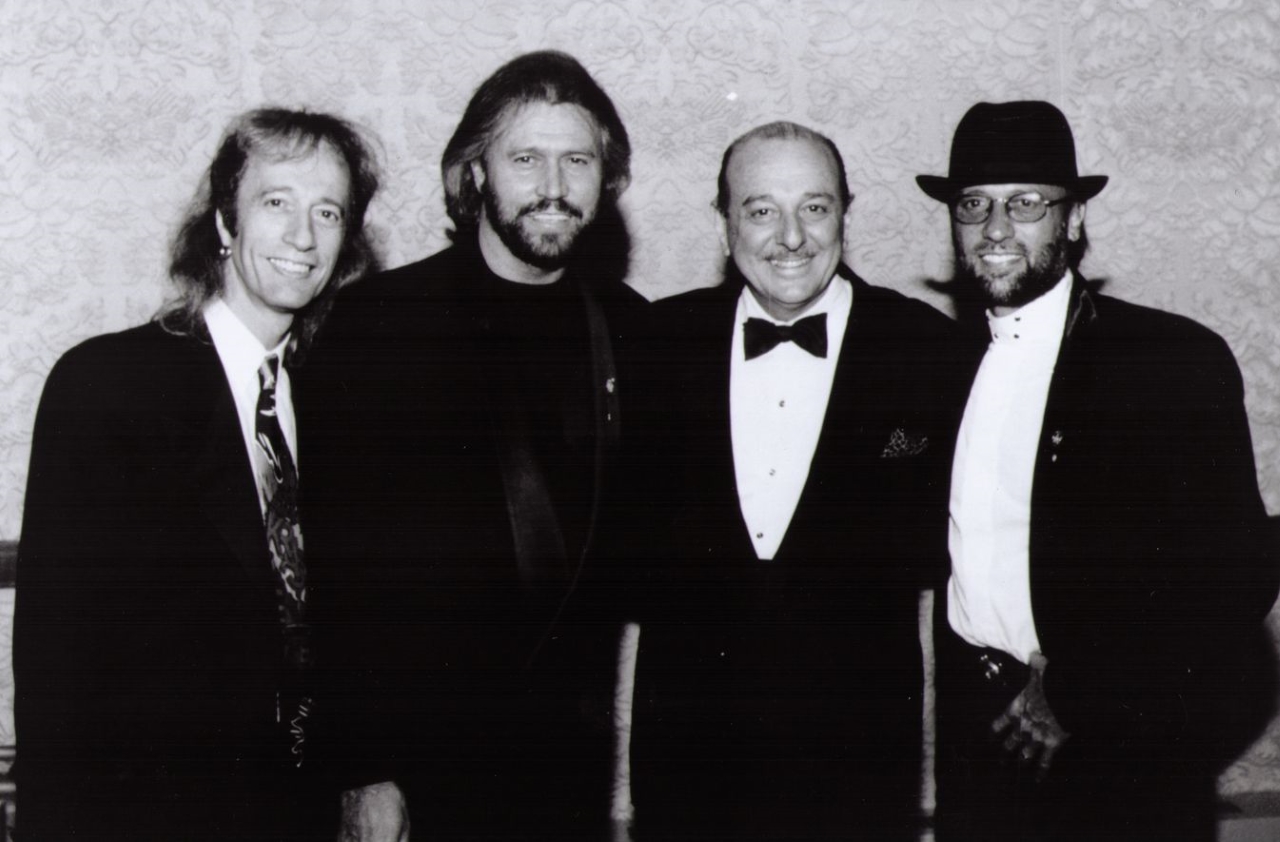🎯 At a Crossroads
By the early 1970s, the Bee Gees — Barry, Robin, and Maurice Gibb — found themselves at a creative and commercial low point. The golden years of late ’60s hits like “Massachusetts”, “Words”, and “To Love Somebody” felt like a distant memory. Their lush orchestral ballads, once beloved, were beginning to sound dated as the music world shifted toward funkier, more rhythm-driven styles.
Albums like Life in a Tin Can (1973) and Mr. Natural (1974) failed to ignite the charts. The brothers faced a stark choice: keep doing what had worked before and risk irrelevance, or take a leap into unfamiliar territory. That leap came in the form of a meeting with producer Arif Mardin, a man with a golden ear for reinvention.

🌟 The Arrival of Arif Mardin
Arif Mardin wasn’t just any producer — he was a master of genre-crossing. Working at Atlantic Records, he had already guided artists like Aretha Franklin, Chaka Khan, and Hall & Oates, blending soul, R&B, jazz, and pop into timeless recordings. He had a knack for finding the unique essence of an artist and amplifying it.
When the Bee Gees met Mardin in 1974, they were intrigued by his reputation and open-minded approach. Mardin, in turn, saw potential in the brothers’ natural harmonies and Barry’s vocal versatility. But he also knew they needed a sonic overhaul — something leaner, groovier, and more contemporary.
🥁 The Shift in Sound
Mardin’s first move was to strip away the heavy orchestration that had defined much of the Bee Gees’ earlier work. In its place, he introduced a tighter rhythm section, funk-influenced bass lines, and more percussive arrangements.
The album Mr. Natural marked the first fruits of this collaboration. While it wasn’t a massive commercial success, it was a crucial transitional step. Tracks like “Mr. Natural” and “Charade” hinted at a new direction: smoother, more groove-oriented, and ready to embrace the changing tastes of the mid-’70s.
🎤 Discovering the Falsetto
One of Mardin’s most lasting contributions was encouraging Barry Gibb to use his falsetto more prominently. During the recording of Main Course (1975), Mardin pushed Barry to explore that soaring high register. The result was electrifying.
Songs like “Nights on Broadway” showcased Barry’s falsetto in a way that was both playful and commanding, instantly giving the Bee Gees a new signature sound. This wasn’t just a stylistic choice — it was a game-changer that set the stage for the disco era.
💃 The Road to Disco
Main Course, released in 1975, was the Bee Gees’ first major hit album in years. Tracks like “Jive Talkin’” and “Nights on Broadway” were drenched in funk grooves, syncopated rhythms, and falsetto-driven hooks. This wasn’t yet full-blown disco, but it was knocking on the door.
Mardin’s arrangements combined R&B swagger with pop accessibility, making the songs irresistible on both radio and dance floors. Jive Talkin’, with its infectious rhythm inspired by the sound of car tires on a bridge in Miami, became a number-one hit in the U.S., proving the Bee Gees could thrive in the new musical landscape.
🚀 Beyond Commercial Success
Working with Arif Mardin didn’t just revive the Bee Gees commercially — it rejuvenated them artistically. The brothers felt creatively energized, excited to experiment, and confident in their evolving sound.
This creative momentum directly paved the way for their disco-dominating era, culminating in Saturday Night Fever (1977). While Mardin did not produce that soundtrack, his influence was all over it — the tight rhythms, the falsetto leads, the seamless blend of pop and dance sensibilities.
🏆 A Legacy of Reinvention
The Bee Gees–Mardin partnership is often overshadowed by the group’s later blockbuster success, but in truth, it was the turning point that made all of it possible. Without Main Course and Jive Talkin’, there may never have been Stayin’ Alive, Night Fever, or the global disco phenomenon they came to define.
Arif Mardin’s genius lay in more than just producing hits. He knew when to challenge artists, when to let them lean into their strengths, and when to push them toward uncharted territory. For the Bee Gees, he wasn’t just a producer — he was the catalyst for their rebirth.
🎶 The Sound That Endured
Even after Mardin and the Bee Gees moved on to separate projects, the lessons and style from their time together continued to shape the group’s sound. The falsetto became a permanent fixture. The groove-focused arrangements stayed central to their hits.
And as the decades passed, countless artists — from Michael Jackson to Bruno Mars — took inspiration from that blend of pop craft and rhythmic drive that Mardin helped them discover.
🕊 Farewell to a Friend
When Arif Mardin passed away in 2006, the Bee Gees paid tribute to him not just as a collaborator, but as a friend who believed in them at their lowest point. Barry Gibb called him “a gentleman and a genius,” crediting him with opening the door to a new world of possibilities.
Their story together is proof that sometimes, the right producer at the right time doesn’t just make a good record — they can change the trajectory of an entire career.